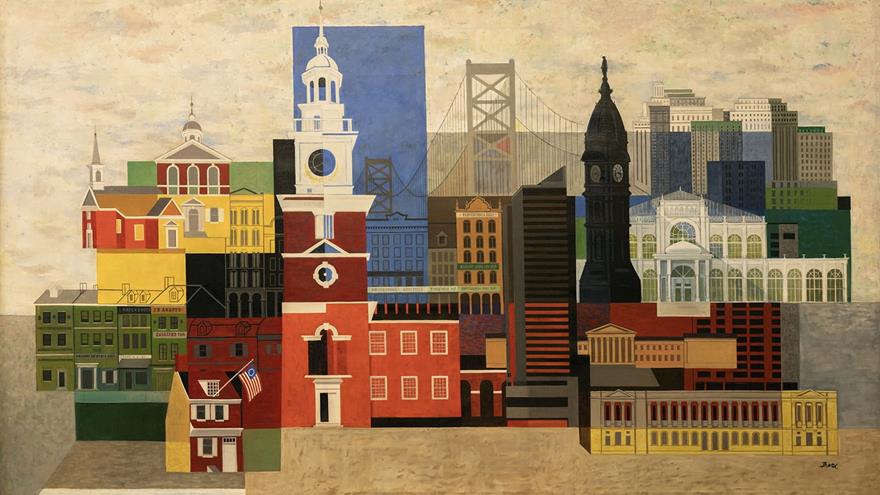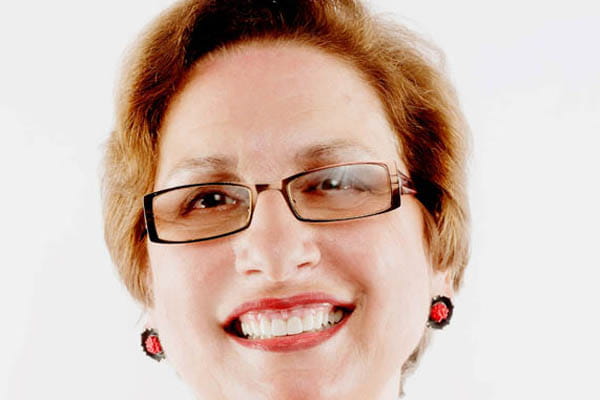So You Want to Run a Museum?: Q&A with Danielle Rice

- ‘Philadelphia Revealed,’ From the Atwater Kent Collection at Drexel Reflects 350 Years of Philly History
- Drexel’s Pearlstein Gallery Offers Spring Exhibitions Centered on the Healing Properties of Art and Creative Works
- The First Exhibition of Contemporary Nepali Artists in the U.S. Debuts in Drexel’s Pearlstein Gallery
- ‘ELECTRIFIED: 50 Years of Electric Factory,’ Philadelphia’s Storied Music Scene Goes on Display at Drexel University

The nation’s museums are facing grave challenges, as the complexity of their missions runs head-on into a difficult funding environment. Those challenges have forced new thinking about how to keep museums viable, highlighted by Drexel University’s 2011 affiliation with the Academy of Natural Sciences. And they’re also demanding a new breed of professional museum leader.
Danielle Rice joins Drexel in September as the director of the new Museum Leadership program in Westphal College of Media Arts & Design. Rice served for eight years as executive director of the Delaware Art Museum in Wilmington, and before that spent 19 years at the Philadelphia Museum of Art. So she’s contemplating not only the sea change in the museum field, but a change in her own career direction. “I’ve had brushes with the academic world, but this is the first time in my life that I won’t be working in museums,” she said.
DrexelNow spoke with Rice about today’s leadership environment in museums.
Why is a museum leadership program necessary today?
When I first entered the profession, there was no such thing as museum studies. No one thought or published about museums. Museum work was something you went into out of love for whatever discipline you were involved in.
But the complexities of finance and technology have grown. And the expectations of the audience have changed, too. It used to be that museums were authorities and people were passive recipients, and we talked a lot about empowering our audiences—well, now they’re completely empowered. They expect content online, on cellphones, they want to give feedback and participate in the design of content. We live in a participatory culture now.
That’s a big change for museums, which are in some ways 18th- and 19th-century institutions. The challenge is to find that sweet spot between popularity, relevance and fundraising so they can achieve sustainability over the long range.
How will Drexel’s program prepare students to face today’s leadership challenges?
The success of our program is going to depend on how well we can place people in leadership positions. We have to make sure we fill specific real and tangible needs. I’ve started surveying my fellow museum professionals—and luckily Philadelphia has no shortage and I have contacts—to find out what those needs are.
The teams behind Drexel’s programs in arts and entertainment administration have done a spectacular job helping to develop the initial curriculum, thinking broadly about gearing the program toward a whole range of museums. I think we’ve got a very interesting interdisciplinary program, with a fair amount of flexibility. The thinking that went into it is excellent, and it’s a niche that no one else is inhabiting, at least around here.
Is there tension between museum leaders who rose up from curatorial disciplines and those trained specifically for management?
That tension was resolved long ago. The profession has gotten so much harder, and leadership requires a broader range of skills and knowledge. Those of us who come up through discipline-based work—history, art history, the sciences—have scrambled to improve our skills in management, finance and strategy. We’ve gotten MBAs, done leadership programs—we have a better sense now of what it takes.
What made you want to move into an academic role after a long career in hands-on administration?
I’ve always been an educator at heart. I’ve done a lot of teaching within the museum setting, and some in a university setting as well. As director, it’s much easier to delegate teaching—you can’t delegate fundraising, board development, all the mushy stuff. I taught a full course at the University of Delaware’s Osher Lifelong Learning Institute last year because I was missing teaching so much.
Another thing you can’t do as much as a museum director is be reflective about the work—you’re so busy. I’ll get to reflect on what’s happening in the museum world, publish papers, do research and get an overview of what it means to be a leader.
Among my colleagues, one of the main topics of discussion is: “We’re all baby boomers, within 5 or 10 years of retirement. We’re looking at a huge leadership gap. We have a responsibility to mentor and train the next generation.”
What are your impressions of Drexel?
When I worked at the Philadelphia Museum of Art I lived in West Philadelphia. In the past 20 years, I’ve seen the explosion of growth in University City that’s 90 percent Drexel-driven. My impression is that Drexel is an incredibly fast-growing, elastic and adaptive institute. I find that very exciting—many academic institutions are struggling in the same way as museums to define themselves for the 21st century. Drexel has already done that.
Is Drexel’s affiliation with the Academy of Natural Sciences a sign of where the museum world is headed?
I think we’re going to see a lot more strategic alliances—the Rosenbach Museum already merged with the Philadelphia Free Library. I’ve talked to a number of museum directors who are looking at the Drexel-Academy model and wanting to know more. In fact I’m proposing a panel at next year’s American Alliance of Museums meeting on strategic alliances.
The Academy affiliation is one of the main reasons Drexel can have the museum leadership program. It’s a tricky piece to run a museum program in an academic setting, and having a museum is important for staying in touch.
Drexel News is produced by
University Marketing and Communications.